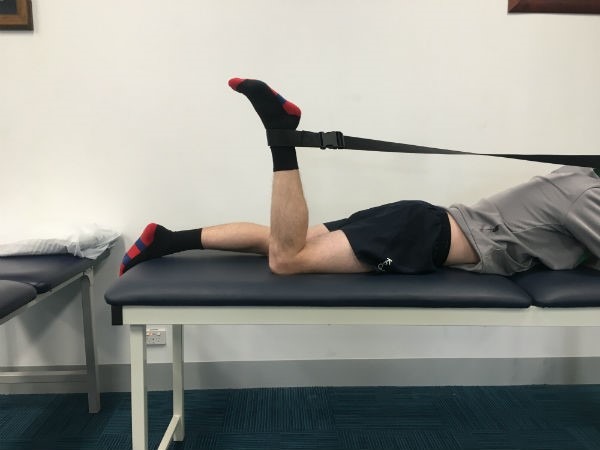Anterior Cruciate Ligament (ACL) injuries are prevalent in sports that involve sudden stops, changes in direction, or direct impact to the knee. ACL Injury is not only painful but can also severely limit an athlete’s ability to participate in sports and perform daily activities. The ACL, one of the major ligaments in the knee joint, plays a crucial role in providing stability and preventing excessive forward movement of the tibia (shin bone) relative to the femur (thigh bone).

Understanding ACL Injuries
The ACL is a critical ligament that helps stabilize the knee joint. Injuries to the ACL often occur during activities that involve sudden stops, jumps, or changes in direction. These injuries can be severe, requiring surgery and a lengthy rehabilitation process.
The Role of Physiotherapy in ACL Injury Rehabilitation
Physiotherapy plays a crucial role in the comprehensive rehabilitation of Anterior Cruciate Ligament (ACL) injuries. It is a structured and evidence-based approach that aims to restore knee function, strength, stability, and range of motion following injury or surgical repair. Here’s how physiotherapy contributes to ACL injury rehabilitation:
Initial Assessment and Treatment Planning: Physiotherapy begins with a thorough assessment of the patient’s knee condition, including range of motion, strength deficits, stability, and functional limitations. This assessment helps the physiotherapist develop a personalized treatment plan tailored to the individual’s specific injury, level of activity, and rehabilitation goals.

Post-Surgical Rehabilitation: For individuals who undergo surgical reconstruction of the ACL, physiotherapy starts immediately after the operation to manage pain, control swelling, and prevent complications such as stiffness or muscle atrophy. Early mobilization and gentle exercises are introduced to promote healing and prevent joint stiffness.
Progressive Exercise Program: Physiotherapy focuses on a progressive exercise program that targets muscle strengthening, particularly of the quadriceps, hamstrings, and muscles around the knee. These exercises help restore muscle balance and stability, which are essential for protecting the ACL and preventing future injuries.
Range of Motion and Flexibility: Physiotherapists employ techniques to improve joint flexibility and restore normal range of motion in the knee. Manual therapy techniques such as joint mobilizations and soft tissue massage help reduce stiffness and adhesions that may develop post-injury or surgery.
Neuromuscular Training and Proprioception: ACL injuries often disrupt proprioception—the sense of joint position and movement—which can affect balance and coordination. Physiotherapy incorporates neuromuscular training exercises, such as balance drills and agility exercises, to enhance proprioception and improve functional stability.

Patient Education and Home Exercise Program: Educating patients about their injury, rehabilitation process, and preventive measures is integral to physiotherapy. Physiotherapists provide guidance on proper movement techniques, sports-specific training, and strategies to minimize the risk of re-injury. A structured home exercise program is also prescribed to reinforce gains made during clinic visits and promote long-term recovery.
The Role of Hydrotherapy in Rehabilitation
Hydrotherapy, also known as aquatic therapy, involves performing exercises in a pool. The buoyancy, resistance, and warmth of the water offer unique advantages that make it particularly beneficial for ACL injury rehabilitation.
1. Buoyancy Reduces Weight Bearing
The buoyancy of water reduces the weight-bearing load on the joints. This is especially beneficial for ACL injury rehabilitation as it allows patients to perform exercises without putting excessive stress on the injured ligament. This can help in the early stages of recovery, enabling movement and exercise when traditional land-based activities might be too painful or risky.

The services we provide: https://www.alexahealthcare.in/physiotherapy-services/
2. Resistance Enhances Muscle Strength
Water provides natural resistance, which helps in building muscle strength. This is crucial for ACL rehabilitation because strengthening the muscles around the knee joint, such as the quadriceps and hamstrings, is essential for regaining stability and function. Hydrotherapy exercises can be adjusted to vary resistance levels, accommodating different stages of recovery.
3. Improved Range of Motion
Warm water helps in relaxing muscles and increasing flexibility. Hydrotherapy can aid in improving the range of motion, which is often limited after an ACL injury. Gentle movements in water can help in stretching and mobilizing the knee joint, promoting better flexibility and reducing stiffness.
4. Pain Relief
The warm temperature of the water can provide pain relief, which is a significant benefit during the rehabilitation process. Hydrotherapy can help reduce pain and discomfort, making it easier for patients to engage in and benefit from therapeutic exercises.

5. Enhanced Circulation
Hydrotherapy promotes better blood circulation, which is essential for healing. Improved circulation helps in delivering oxygen and nutrients to the injured tissues, accelerating the healing process. It also helps in reducing swelling and inflammation around the knee.
Common Hydrotherapy Exercises for ACL Rehabilitation
Several exercises can be performed in a hydrotherapy pool to aid in ACL injury rehabilitation. Here are a few examples:
1. Walking and Jogging in Water: This helps in improving gait and building strength without putting stress on the knee joint.
2. Leg Swings: Gentle leg swings in water can help in improving range of motion and flexibility.
3. Squats: Performing squats in water provides resistance and helps in strengthening the quadriceps and hamstrings.
4. Step-Ups: Using a submerged step, patients can perform step-up exercises to improve balance and strength.
Conclusion
Hydrotherapy offers a unique and effective approach to ACL injury rehabilitation. Its benefits include reduced weight bearing, enhanced muscle strength, improved range of motion, pain relief, and better circulation. By incorporating hydrotherapy into a comprehensive rehabilitation program, patients can achieve better outcomes and a faster return to their normal activities.
If you or someone you know is recovering from an ACL injury, consider exploring the benefits of hydrotherapy. At our clinic, we offer specialized hydrotherapy programs tailored to individual needs, helping patients recover safely and effectively. Contact us today to learn more about how we can support your rehabilitation journey.

A team of Physiotherapists in Alexa Clinic under the guidance of Dr. Shipra Kumari, Chief Physiotherapist and certified Aquatic Therapist (IATF Switzerland).
Alexa Clinic is a super-specialty physiotherapy and aquatic therapy clinic first of its kind opened in Kolkata in the in the year 2019. With many accolades and recognition Alexa Clinic has treated more than 10,000 patients.
It’s easy to book an appointment with Dr. Shipra Kumari over a call or visit the 8777694040 websites of Alexa Healthcare.
https://www.facebook.com/alexaactiveaging
https://www.youtube.com/@alexaactiveaging
